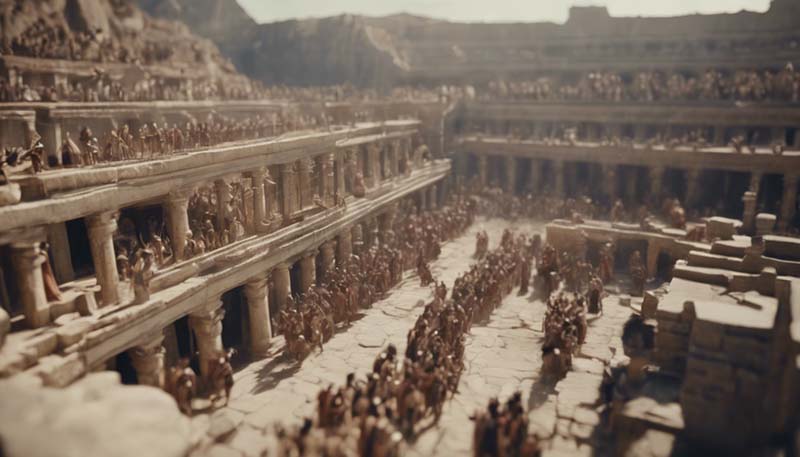The Rise and Fall of Ancient Empires: A Historical Perspective
The history of ancient empires is a tapestry woven with threads of ambition, conquest, cultural exchange, and eventual decline. This essay explores the common themes and patterns that characterized the rise and fall of some of the most prominent ancient empires, including the Egyptian, Mesopotamian, Indus Valley, Chinese, Roman, and Mayan civilizations.
Introduction
Throughout history, empires have risen and fallen, their legacies shaping the course of human development. The rise of an empire often begins with the consolidation of power, the expansion of territory, and the establishment of a centralized government. However, the fall of an empire can be attributed to various factors, including economic decline, military defeats, internal strife, and external pressures.
Advertisement
The Egyptian Empire
The Egyptian Empire, known for its monumental architecture and the enduring mystery of the pyramids, rose to prominence around 3100 BCE. It was characterized by a strong central government and a belief in divine kingship. The Nile River played a crucial role in the prosperity of the empire, providing fertile land and a means for transportation and trade.
Factors Leading to Decline
- Internal strife and corruption within the ruling class
- Economic decline due to over-reliance on agriculture
- External pressures from foreign invasions
The Mesopotamian Empires
Mesopotamia, known as the cradle of civilization, saw the rise and fall of several empires, including the Sumerians, Akkadians, Babylonians, and Assyrians. These empires were known for their advancements in law, writing, and technology.
Factors Leading to Decline
- Geopolitical rivalries and constant warfare
- Environmental degradation and changing river courses
- The rise of neighboring powers such as the Persians
The Indus Valley Civilization
The Indus Valley Civilization, one of the world's oldest urban cultures, thrived around 2600 BCE. It was characterized by well-planned cities, advanced sanitation systems, and a standardized system of weights and measures.
Factors Leading to Decline
- Climate change and the drying up of rivers
- Internal decay and the breakdown of urban centers
- Possible invasions by external tribes
The Chinese Dynasties
China's history is marked by a succession of dynasties, each with its own period of rise and fall. The Qin, Han, and Tang dynasties, among others, are notable for their contributions to Chinese culture, governance, and military strategy.

Factors Leading to Decline
- Overextension and military conquests
- Corruption and the abuse of power by the ruling elite
- Rebellions and peasant uprisings
The Roman Empire
At its height, the Roman Empire spanned three continents, with a diverse population and a complex system of governance. It is known for its law, architecture, and the Latin language, which has influenced many modern languages.
Factors Leading to Decline
- Economic instability and heavy taxation
- Political corruption and the decline of moral values
- Military defeats and the inability to defend vast territories
The Mayan Civilization
The Mayan civilization was a highly advanced Mesoamerican culture that developed a complex writing system, astronomy, and a sophisticated understanding of mathematics.
Factors Leading to Decline
- Environmental degradation and resource depletion
- Climate change and prolonged droughts
- Warfare and the breakdown of alliances between city-states
Conclusion
While each ancient empire had its unique characteristics, they all faced common challenges that ultimately led to their decline. The study of these civilizations provides valuable insights into the dynamics of political power, cultural development, and the interplay between human societies and their environments. As we reflect on the rise and fall of these ancient empires, we can better understand the forces that shape our own world and perhaps learn from the lessons of the past.
Comments